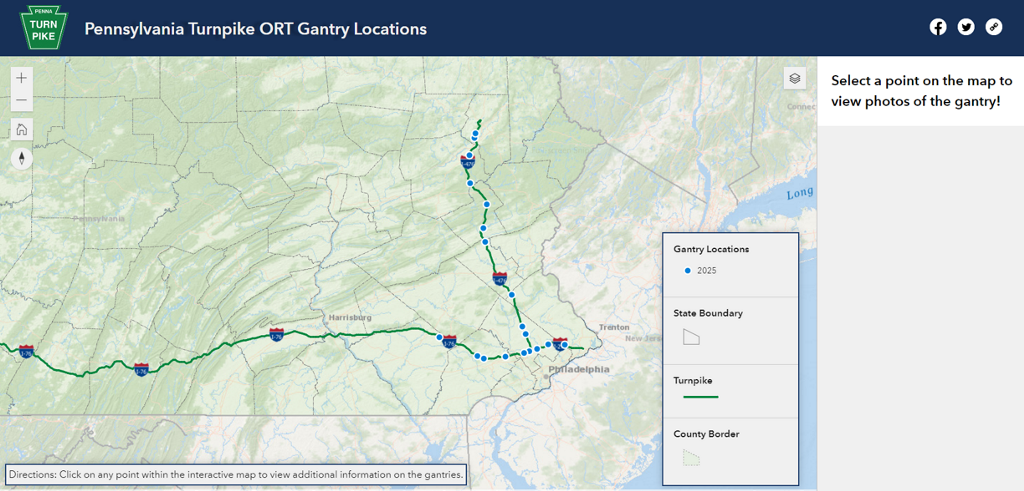The Benefits of ORT
ORT represents the future of toll collection worldwide. It is a safer and more convenient way for customers to travel.
The thought has always been to move collections away from our interchanges once the gantries were installed along the mainline of the PA Turnpike. This transition started more than 10 years ago. It has been implemented in phases to ensure a seamless conversion from our hybrid cash and E-ZPass system to our current All-Electronic Tolling (AET) system, and ultimately moving to our ORT system.
In 2011, the Turnpike conducted a study on the impact that AET would have on customers, operations and our organization. The PA Turnpike Commission launched a series of AET pilots across the state beginning in 2016 to get real-world data, which continues to show that the technology and our tolling system is meeting all projections.
In 2025, the system will move toward ORT. The system and our rate of collections is performing within expectations set for us by our 10 years of research and what we know to be standard at our peer agencies nationwide.
Now more than ever, tolling facilities around the globe are implementing cashless operations. We're seeing its benefits in safety, mobility, sustainability, and environmental, just to name a few.
| Benefit | Description |
|---|---|
| It meets customer preferences for cashless payment options. | More than 86% of PA Turnpike travelers use E-ZPass today, and 70% of travelers surveyed said they prefer AET to traditional interchanges. |
| It increases access, boosts economy, and improves mobility. | Upon implementation, the PA Turnpike can build more access points at a fraction of the cost of an interchange. This delivers economic and mobility benefits to adjacent communities, allowing more access to these locations from the Turnpike. |
| It is safer for drivers at entry and exit points. | ORT removes toll booths, eliminating the confusion and lane switching associated with traditional stop-and-go tolling. With the removal of traditional toll booths, this also allows our customers a better line of sight as they approach the gantries. |
| It saves time and improves efficiency. | AET increases mobility by reducing travel-time impacts. With ORT, travel time and mobility impacts of traditional tolling methods will be eliminated. |
| Access for all regardless of payment preference. | AET provides all travelers access to all entry and exit points, regardless of how they choose to pay tolls. |
| It's better for the environment. | Non-stop travel means lower emissions, less fuel, and a cleaner environment. Eliminating tollbooths reduces the footprint — or property impacts — of interchanges. |
| It's preferred among states with tolling. | The future of tolling is ORT, which is why we see it being adopted by more than 65% of U.S. tolling agencies. |
| It will help to save the PA Turnpike $25 million a year. | A $25 million yearly savings in interchange maintenance and operations post-ORT. |

